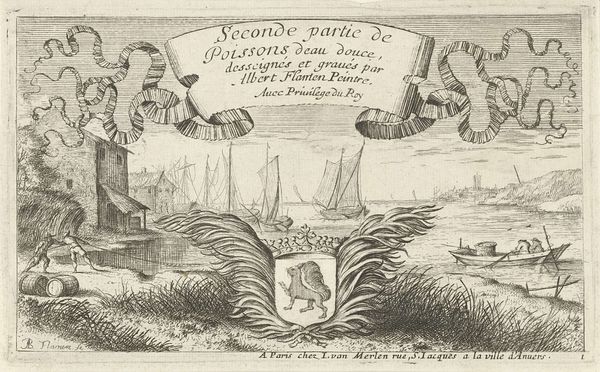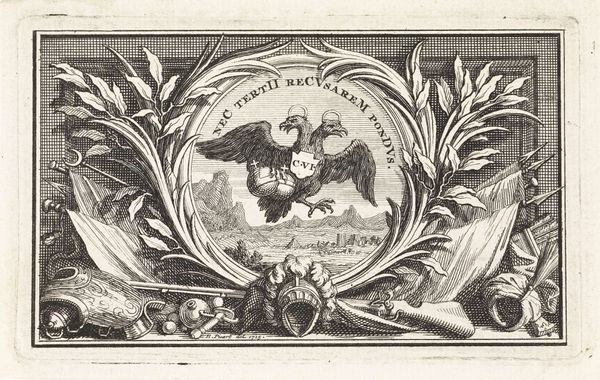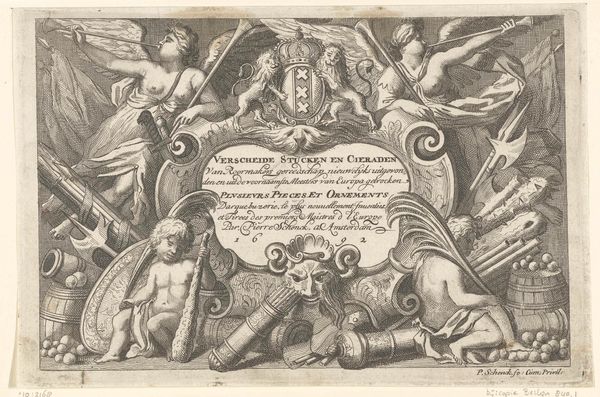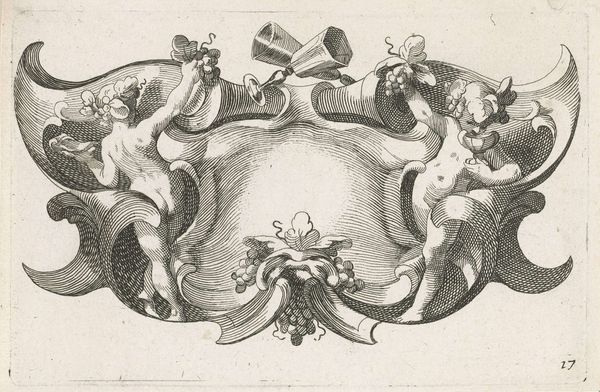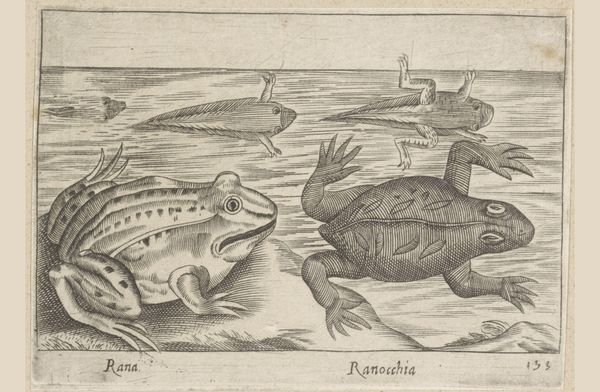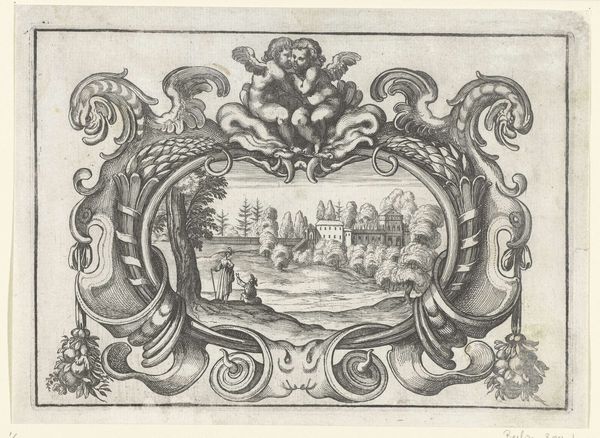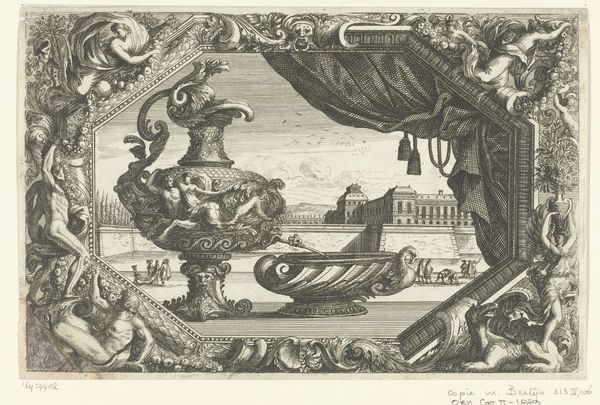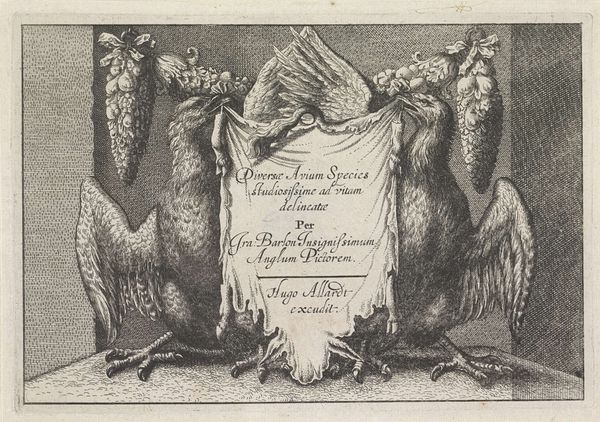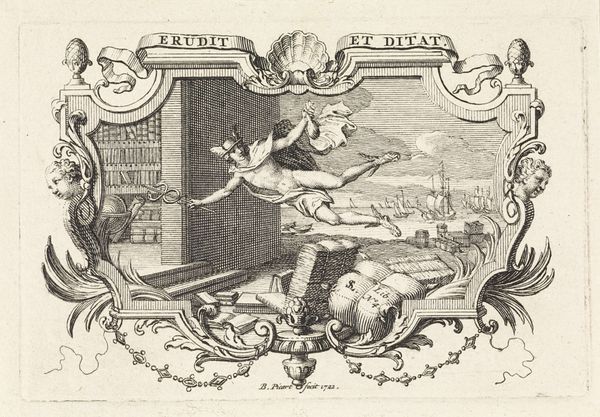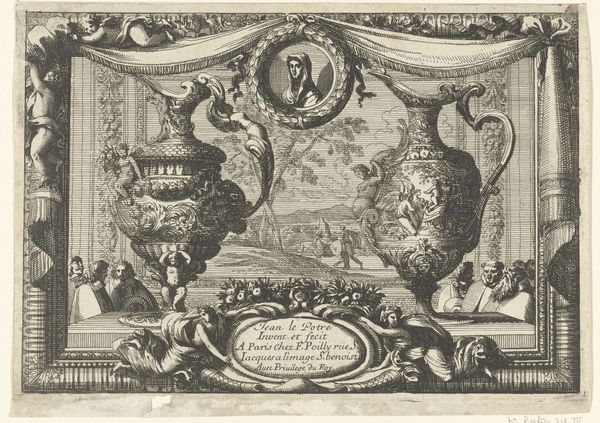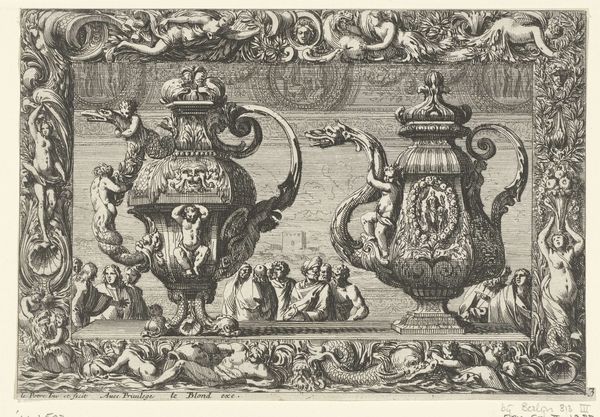
print, engraving
#
baroque
# print
#
landscape
#
engraving
Dimensions: height 103 mm, width 175 mm
Copyright: Rijks Museum: Open Domain
Curator: Here we have Albert Flamen's "Seascape with border of marine animals and a fishing net," created around 1664. It’s a Baroque engraving. What catches your eye initially? Editor: Okay, that's wild. My first thought is... whoa, this print is both strangely beautiful and slightly unsettling. I'm struck by the contrasting elements—serpentine, monstrously embellished sea creatures frame a placid seascape, giving it this surreal and captivating edge. Curator: The baroque loved that tension. It's fascinating how the sea creatures act as gatekeepers to the scene within. Marine animals and nets evoke the ocean's abundance and potential danger, both sustained and threatened by humanity. They embody that duality in visual form. The serpents may be symbolic of change and rebirth but the marine creatures—with mouths agape—holding a fishing net feel more predatory. Editor: Yes, definitely gatekeepers, but with… attitude. The way those animals grasp that net seems almost territorial, or maybe even protective of the idyllic scene behind them, while also being menacing. They draw you in with their gaze but almost dare you to proceed into their watery world. The ship appears tranquil, oblivious. It makes me wonder about unseen realities that our idyllic scenes may obscure, as if daring us to plunge into the abyss to know. Curator: And you can read those nets several ways. They trap, they define—and the same material protects that central scene from outside forces. A potent cultural symbol repurposed as part of the piece. Editor: It also suggests this relationship of man, ship, the marine creatures, the open seas, this dance—it is contained in a very specific frame. The work becomes, almost, about capturing the whole world in this tiny tableau. How are our definitions imprisoning, even killing, our subjects? Or what needs protection? It has made me rethink our reliance on definition! Curator: Exactly. It gives you so much to think about the relationship we have with the natural world—and to examine that frame, both literally and conceptually. Editor: Well, that was a great plunge into some deeply layered historical context. I think I need to look at that ship again.
Comments
No comments
Be the first to comment and join the conversation on the ultimate creative platform.
